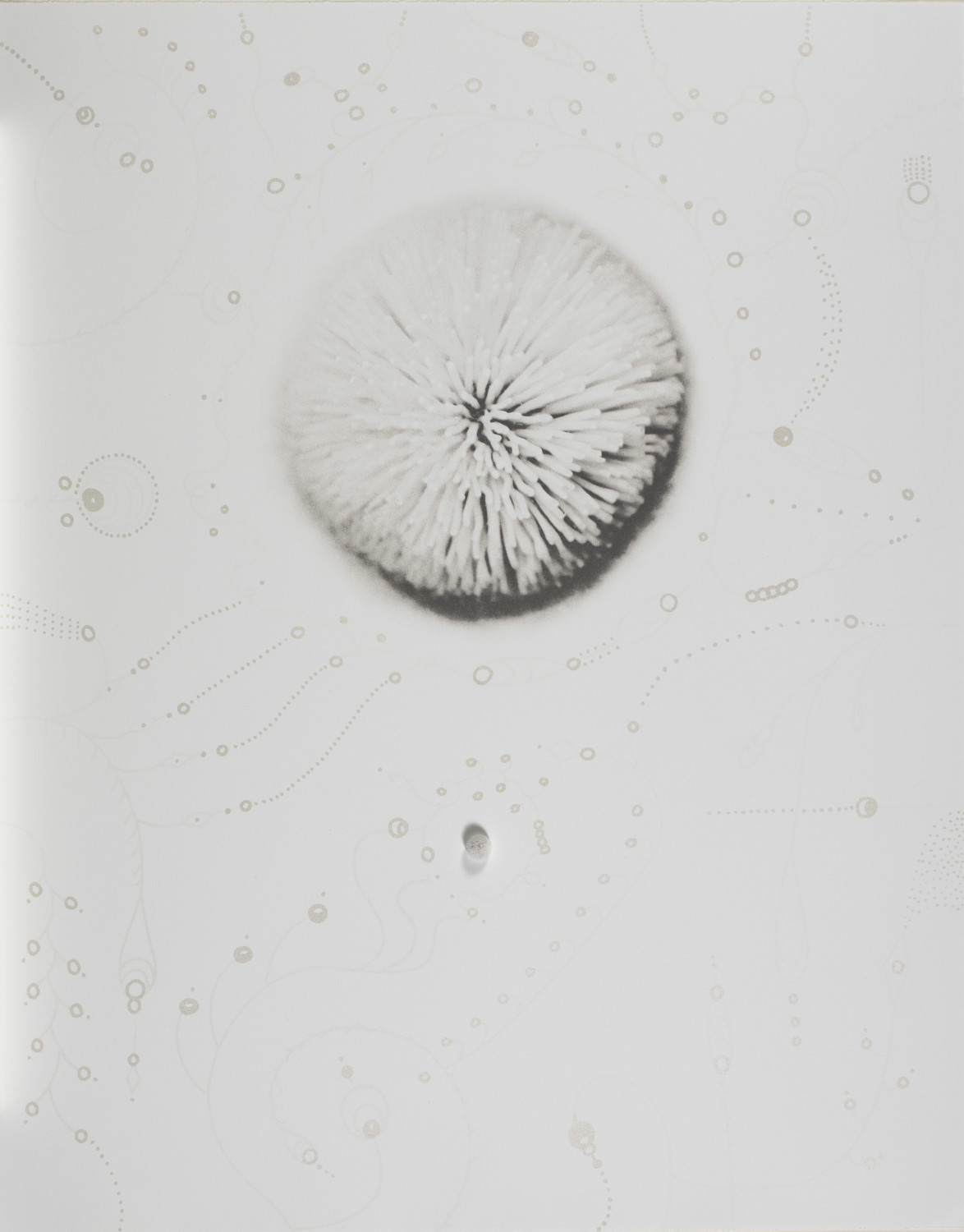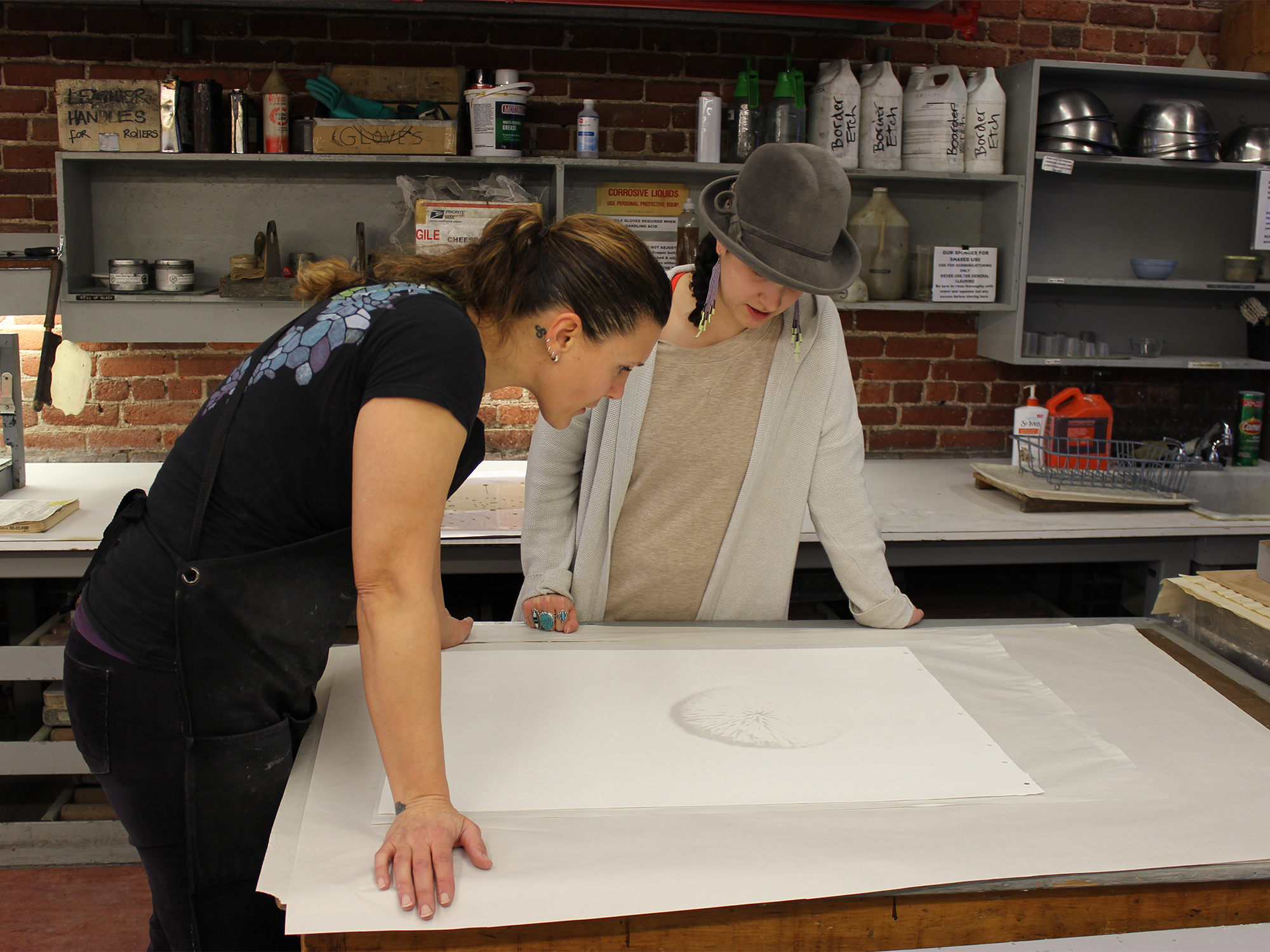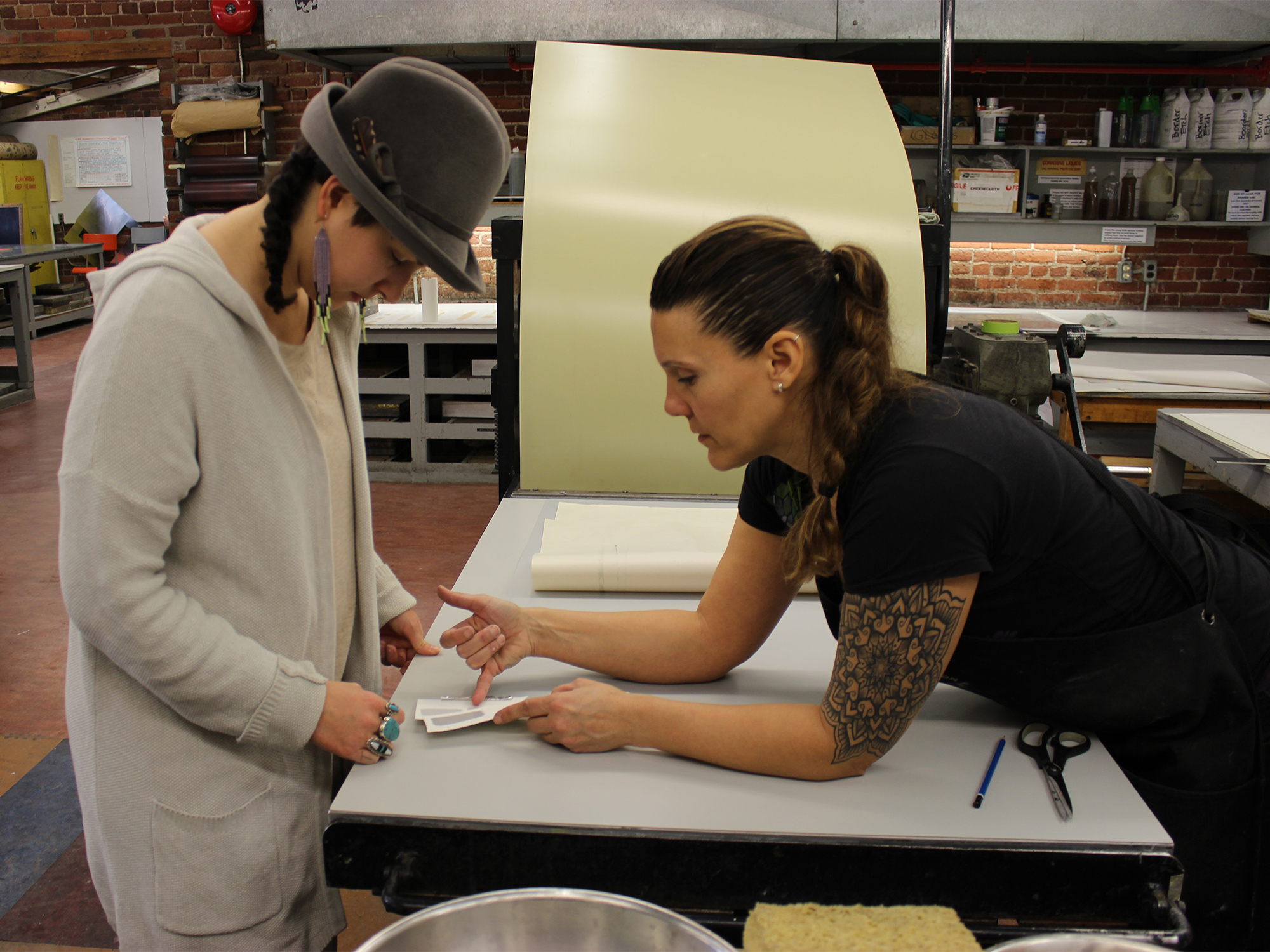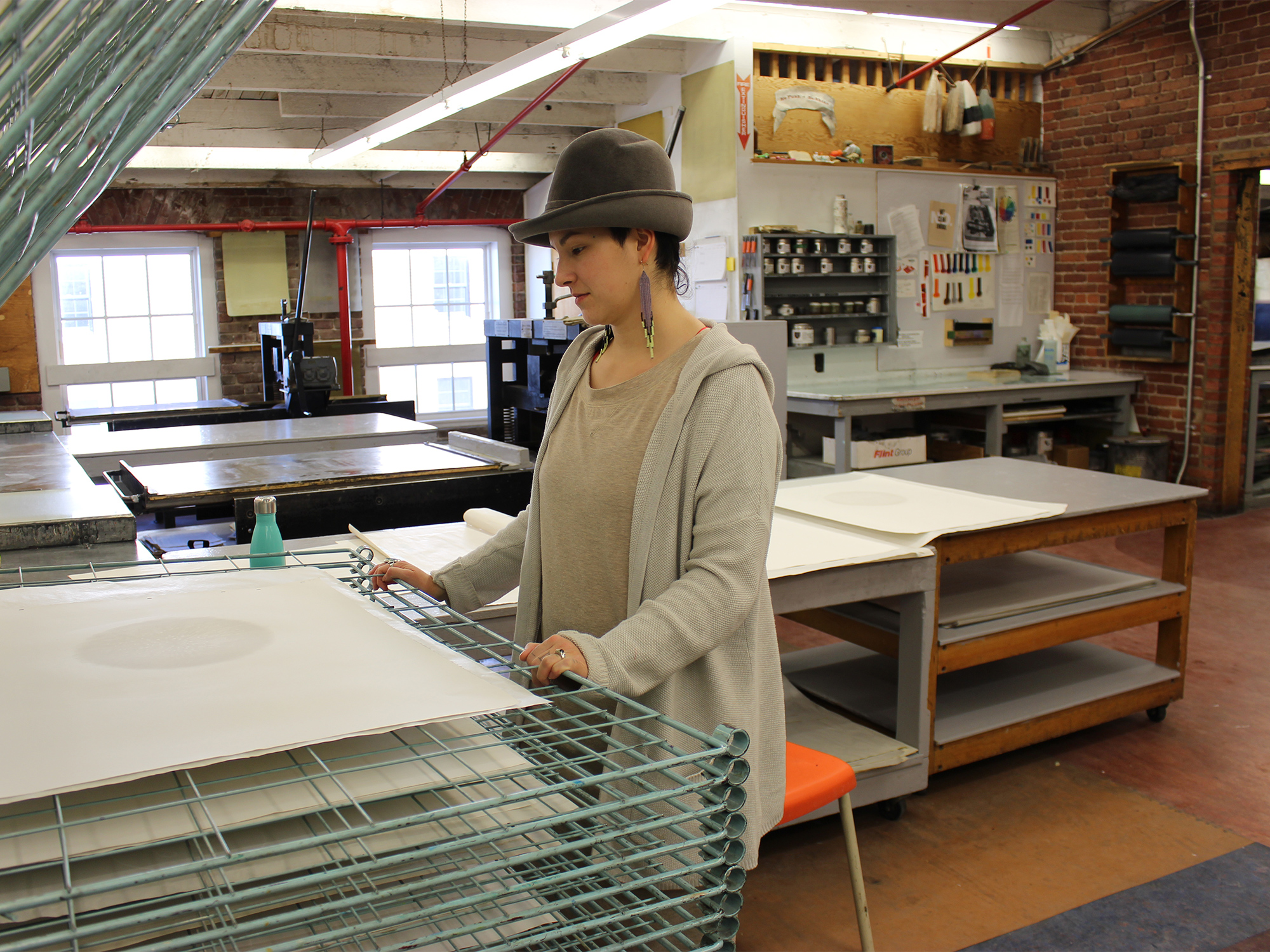Description
“Tufting is magic.” Amy’s joy radiates over the phone. It’s infectious, much like her laugh. Amy Malbeuf’s admiration of both the practice of tufting and the animals utilized in the process is evident throughout our conversation.
Malbeuf is a Métis multidisciplinary visual artist from Rich Lake, Alberta. Her artistic practice employs animal hair tufting, performance, installation, and video. Her work engages in the topics of identity, land, place, language and ecology. Malbeuf’s practice is centered in and on the land. She explores how land is experienced through her body as an Indigenous woman and she relates to all Creator’s beings through her artistic practice in medium and message.
During her time at NSCAD’s Lithography Workshop, Malbeuf collaborated with Master Printer Jill Graham to create a print honouring the artistic practice of tufting and the animals used in the process. Animal hair tufting is an Indigenous art form that uses coarse hair from moose or caribou to create small decorative puffs typically sewn to leather, velvet or canvas. Once sewn to the backing the puff is sculpted with scissors to create the desired shape. Originally practiced by northern Indigenous communities, tufting is a resourceful way of using the entire animal. The practice of tufting was spread and maintained through residential school programs that sought to teach Indigenous children useful skills, based on western ideas of success, such as agriculture, sewing, cooking, and handicrafts; a silver lining to a dark history.
I was fortunate enough to learn the basics of tufting from Malbeuf at Petapan’s 2019 gathering in St. John’s, Newfoundland. To create a single tuft you begin with a small amount of animal hair, sew it through a stitch in leather, then pull the sinew from the back of the leather to create a puff that magically appears with tension. It’s a beautiful experience that Malbeuf knows intimately.
At the NSCAD Lithography Workshop Malbeuf wanted to focus on her drawing, a practice she normally keeps private. Researching the NSCAD Lithography archives to gather ideas of what was technically possible and drawing from her own experience as an Indigenous female maker, Malbeuf created a print that highlights her drawing abilities and tufting skills while taking advantage of Graham’s knowledge as a Master Printer. The print features the image of a magnified tuft centered in sharp detail. Below this, surrounded by intricate iridescent freehand drawings, is a small, delicate, real tuft. The print is deceptively quiet, reminiscent of the prairies themselves. Looking across the landscape of the prairies, it first appears still but upon closer inspection there is constant movement.
Malbeuf’s drawing practice looks to land for inspiration, specifically the prairies. Drawing from the land and for the land is something Indigenous artists have been practicing since time immemorial. During the creation of this print, Malbeuf sought to unlearn western teachings of drawing and incorporate tufting and beadwork, asking herself “what would this flower or plant look like translated into beading or tufting and how would I draw it?” The iridescent drawing that moves across the paper requires the viewer to shift their perspective, generating a dance of sort, to experience the entire print. This dance that is required by the viewer is meant to combat the assumed consumability of art, particularly Indigenous female art.
Tuft life honours the practice of tufting, its history and the people that have maintained it. Each print is made even more special with the inclusion of a single tuft, sculpted by Malbeuf’s knowledgeable and careful hands.
— Carrie Allison
Amy Malbeuf is a multidisciplinary visual artist, educator and tatoo practitioner from Rich Lake, Alberta, Canada. She utilizes a variety of mediums including performance, installation, sculpture, caribou hair tufting, beadwork, and digital media to examine language, territory, nature and identity. Malbeuf has exhibited and performed nationally.



